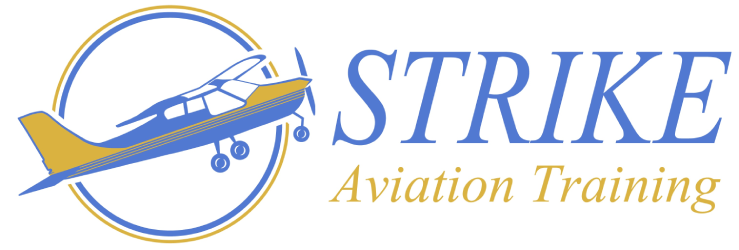
CESSNA 210 TRAINING
You want to get ready for your first Commercial Pilot Job, or perhaps you just want to travel longer distances with more family and friends in a bigger, heavier, more complex aircraft?
KICK START YOUR TRAINING TODAY
High Useful Load:
The 210 can carry a substantial amount of weight, including passengers, baggage, and fuel, making it suitable for various missions.
Speed and Performance:
The 210 is a relatively fast aircraft for its class, particularly with its retractable landing gear, allowing for efficient cross-country flights.
Six-Seat Capacity:
The 210's ability to comfortably seat six people makes it a popular choice for family travel and business trips.
Adaptability:
The 210 can be used for various purposes, including long-distance travel, cargo hauling, and even as a bush plane.
Retractable Landing Gear:
This feature improves speed and efficiency but also adds complexity to maintenance.
Reliability:
While it has higher maintenance costs due to the retractable gear, it's generally considered a reliable and capable aircraft.
Comfort:
The 210 is known for its comfortable cabin and good visibility, making it a pleasant experience for both pilots and passengers.
AWESOME. So, why should I get specific training to fly the Cessna 210?
For many pilots, transitioning to an aircraft such as the 210 means taking their flying to the “NEXT LEVEL”. Specific training is required to fly a Cessna 210 due to it being a high-performance, complex aircraft, and transitioning from a simpler aircraft requires specialized knowledge and skills. This includes understanding its unique systems, handling characteristics, and performance limitations, which differ from more basic training aircraft.
Appropriate training ensures safe operation and helps pilots avoid potential hazards associated with the 210's capabilities such as;
High-Performance Aircraft:
The Cessna 210 is a high-performance aircraft, meaning it has a higher power-to-weight ratio, faster speeds, and more complex systems than basic training aircraft like the Cessna 172.
Complex Systems:
The 210 has features such as retractable landing gear, a turbocharged engine (in some models), and potentially a pressurized cabin (in the P210), all of which add to its complexity and require specific training.
Performance Differences:
The 210's performance characteristics, such as stall speed, climb rate, and landing speeds, differ from those of simpler aircraft. Pilots need to be trained on how to manage these differences to operate the aircraft safely.
Insurance Requirements:
Some insurance companies require specific training for the Cessna 210, particularly the pressurized P210, as part of their risk management.
Safety:
Mishandling of a high-performance aircraft like the 210 can lead to serious consequences, such as runway overruns, stalls, or loss of control. Proper training helps pilots avoid these situations by providing them with the necessary knowledge and skills.
Operational Considerations:
The Cessna 210 is often used for longer cross-country flights and can operate into more challenging environments, such as unpaved airstrips. Training can cover these operational aspects, including short-field and soft-field landings, and navigation.
Specific Training Needs:
Initial (and re-current) training for the Cessna 210 may include:
Initial type-specific ground and flight training:
This covers the aircraft's systems, performance, and limitations.
Differences training:
If transitioning from another
aircraft, this training focuses on the specific differences between the two aircraft.
Emergency procedures:
This training covers how to handle various emergencies, such as engine failures, gear
malfunctions, and loss of pressurization (if applicable).
Practical experience:
This includes practicing manoeuvres, landings, and other flight operations in the 210 under the supervision of a qualified instructor.
Avionics Systems:
Some aircraft, like our very own VH-SFT, have modern avionic and engine management systems installed. Unfamiliarity with these systems can lead to significant distractions in the cockpit. Fumbling with buttons to trying to “make things work” during critical phases of flight can lead to a loss of situational awareness, especially whilst flying at 155Kts.
In summary, training is essential for safe and effective operation of the Cessna 210 and will provide pilots the knowledge and skills required to handle its unique characteristics
and, how to operate it within its performance envelope.
Strike Aviation Training providesa unique 3 Element course for Cessna 210 training.
Working though the “Pre-Course Study” program in your own time at home, will provide you information relating to the Cessna 210 systems as well as the avionics fitted to “Biggus” (VH-SFT). A basic understanding of the specific equipment fitted to the aircraft you are about to fly is not only good safe practice but will help streamline your training.
-
ELEMENT 1 - PRE-COURSE STUDY & SKILLS ASSESMENT FLIGHT
There is an expectation that pilots undertaking this training will have a good working knowledge of aircraft systems and will also be able to pilot a complex aircraft (MPPC) to the minimum standards for either a PPL or CPL as applicable.
Building upon this underpinning knowledge, enrolled students will be provided training resources to work through prior to commencing Element 2.
SKILLS ASSESMENT FLIGHT
All course candidates are required to undergo a minimum 1 Hour assessment flight in our Cessna 172 prior to the commencement of Elements 2 and 3. The purpose of this flight is to ascertain the candidates baseline of aircraft handling and understanding of aircraft energy state and configuration management.
-
The key aspects of our Cessna 210 Ground Training Element include.
· Aircraft Systems:
Understanding the Cessna 210's systems, including the engine, electrical, hydraulic, and flight control systems, is crucial.
· Performance Planning:Learning how to calculate take-off and landing distances, climb rates, and other performance parameters is essential for safe operation.
· Procedures:Training covers normal, abnormal, and emergency procedures, including checklists and emergency responses.
· Operational Considerations:Specific training may focus on operating from remote or unsealed airfields.
· Understanding Energy Management:
An aircraft approaching 2 Tonne, powered by a 300HP engine that hurtles through the air at around 300Km/Hr demands that the pilot manage the aircraft’s “Energy State”.
NOTE:
If you are not familiar with this term, then it is likely you are going to
struggle flying the Cessna 210 safely, efficiently and
with due regard to managing the requirements of the engine and other systems.· Scenario Based Training:
An optional integrated practical exercise, such as an overnight simulated charter operation is available. This “Add-On” will require you to not only manage aircraft fuel, performance and weight & balance planning, but will also challenge you to think about other logistic requirements relating to yourself and your passengers when operating away from home base.
-
Finally, the time has come to strap on the venerable Cessna 210. Flight exercises performed will be like those you have encountered throughout you previous training.
Exercises such as;
· Ground handling,
· Taxying
· Straight & Level
· Trimming
· Turns at varying angles of bank
· Stalls
· Emergencies away from the circuit
· Managing descent profiles
· Circuits & circuit emergencies
· Energy Management
· Short & Soft Field workare all pertinent to ensure the budding Cessna 210 pilot is best prepared to provide the safest possible environment for the crew, passengers and the aircraft.
DO NOT EXPECT TO FINISH THE TRAINING
AND BE AN “EXPERT CESSNA 210 PILOT”To manage expectations, this course is not just a “Cessna 210 Familiarization Training Course”.
It is much more than that.Your level of skill and knowledge entering the course will ultimately determine what competency you will reach by the end of this training. Here at Strike Aviation Training, part of our culture is that your training never really ends.
Whether you progress to flying in the “Top End” on your first job, or taking friends and family on trips that create memories, this course will prepare you for the next chapter of your aviation learning.
Our Pricing
from $7202
1 student per course
from $7005
2 students per course
from $6414
3 students per course
Contact us.
Your aviation journey starts or continues with Strike Aviation Training
Contact us to learn more about how we can assist you in becoming the best pilot you can be.
Karen Strike
0422 174 871
Paul Strike
0412 970 855
YOUR CESSNA 210 TRAINING JOURNEY
ENROLE IN THE NEXT COURSE
ELEMENT 1
Receive “Pre-Course Study Material”
&
Undertake “Skills Assessment Flight”
ELEMENT 2
GROUND TRAINING
(1 Day Classroom)
ELEMENT 3
FLIGHT TRAINING
3 Students - 5 Days of flying
2 Students - 3-4 Days of Flying
1 Student - 2-3 Days of flying
OPTIONAL
SCENARIO BASED TRAINING
3 Days and 2 Nights
flying simulated Charter Flights
to exotic destinations
(Additional Costs - POA)
TAKE YOUR AVIATION JOURNEY TO THE NEXT LEVEL
FLY, FURTHER AND FASTER
WITH OUR CESSNA 210 TRAINING
Don’t delay.
Secure your spot for this
exciting and rewarding training with
Strike Aviation Training.





